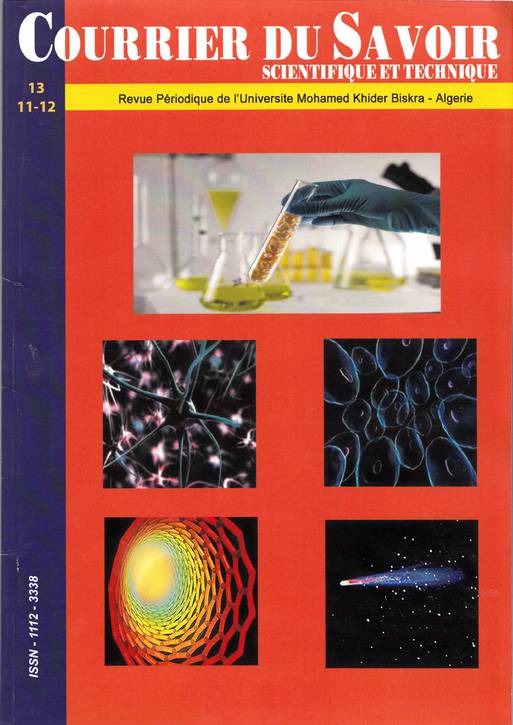PARAMETERS OPTIMIZATION OF SPRINGBACK INSHEET METAL FORMING BY RESPONSE SURFACE METHOD OPTIMISATION DES PARAMETRES DU RETOUR ELASTIQUE ENEMBOUTISSAGE DE TOLES PAR LA METHODE DE SURFACE DE REPONSE
Résumé
This paper deals with the optimization of Sheet Metal Forming parameters in order to reduce defect of springback which occur
at the end of process. We propose a specific methodology based on the coupling between the one-step Inverse Approach as a
surrogate model for the rapid simulation of sheet forming process, and a Response Surface Method based on diffuse
approximation. The response surfaces are built using Moving Least Squares approximations constructed within a moving
region of interest. Application of the sheet metal forming process is used to demonstrate the robustness of the method. The
final design is validated with Stampack
®
and Abaqus
®
commercial codes based respectively on Explicit Dynamic and Implicit
Static Approaches.
Cet article traite de l'optimisation des paramètres d’emboutissage de tôles afin de réduire le défaut du retour élastique qui se produit à la fin
du procédéaprès retrait des outils. Nous proposons une méthodologie spécifique basée sur le couplage entre l’approche inverse pour la
simulation rapide du procédé d’emboutissage de tôles, etla Méthodede surface de réponse basée sur l’approximation diffuse. Les surfaces
de réponse sont obtenues en utilisantune approximation par moindre carrée mobile construites dans un domaine d'influencemobile.
Une application du procédé d’emboutissage de tôles est utilisée pour démontrer la robustesse de la méthode. La forme finale est validéeà
l’aide des codes commerciauxStampack
®
et Abaqus
®
basés sur les approches Explicit Dynamique et Implicite Statique respectivement.
Références
Approach with simple triangular shell elements for
large strain predictions of sheet metal forming parts”,
Engineering Computations (15): 6-7, pp. 864-892,
1998.
[2] Gati W., “Approche Pseudo Inverse pour simulations
rapides du procédé d’emboutissage et de retour
élastique des pièces en tôles minces”, Ph.D. thesis,
Compiègne University of technology, 2002.
[3] Demeri M. Y., Lou M., Saran M. J., “A Benchmark
Test for Springback Simulation in Sheet Metal
Forming”, SAE Technical Paper Series: 2000-01-2657, SAE International, 2000.
[4] Lancaster P. and Salkauskas K., “An Introduction:
Curve and Surface Fitting”, Academic Press Inc.,
1986.
[5] Lewis R.M., Torczon V., “Pattern Search Methods For
Linearly Constrained Minimization”, Siam J. Optim.
Vol. 10, No. 3, pp. 917–941, 2002.
[6] Myers RH, Montgomery DC “Response Surface
Methodology Process and Product Optimization using
Designed Experiments”. John Wiley and Sons, Inc.,
New York, USA, 2
nd
ed., 2002.
[7] Quantech ATZ, “Stampack user guide – version 5.3”,
Quantech edt., Edificio Nexus, Gran Capitán, 2-4,
08034, Barcelona, Spain, 2003
[8] Stander N., “The successive response surface method
applied to sheet-metal forming, Proceedings”, First
MIT Conference on Computational Fluid and Solid
Mechanics, pp481-485, June 12-15 2001.


